All You Wanted To Know About The Indian Juttis
Jutti is both a historical and present symbol of Indian ancestry. Jutti (also written Jhutti, Juthi, Juti) is an Urdu word that refers to a shoe having a closed upper and a sole. But don't you want to know how these juttis were developed? Here is its history.
Origin
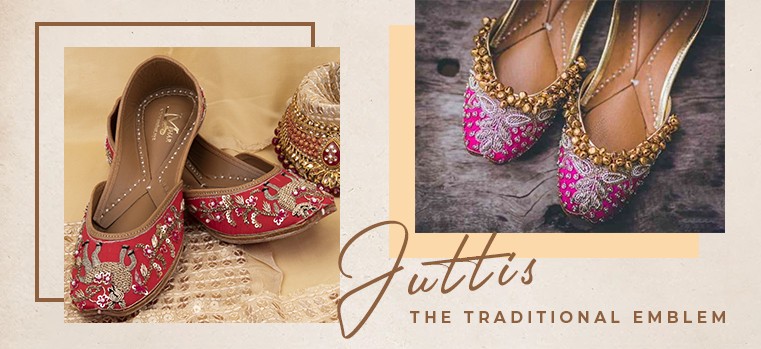
Jutti is Indian traditional footwear with a history dating back to 200BC. Their origins can be traced back to the Mughal Empire. Jutti's has evolved from a traditional footwear brand to a custom-made ethical must-have. They cover the front half of the feet and are spherical or M-shaped. Strapped sandals were very popular throughout the Buddhist era. Later, in north India, particularly Punjab and Rajasthan, these ethical shoes gained popularity.
Juttis of Rajasthan
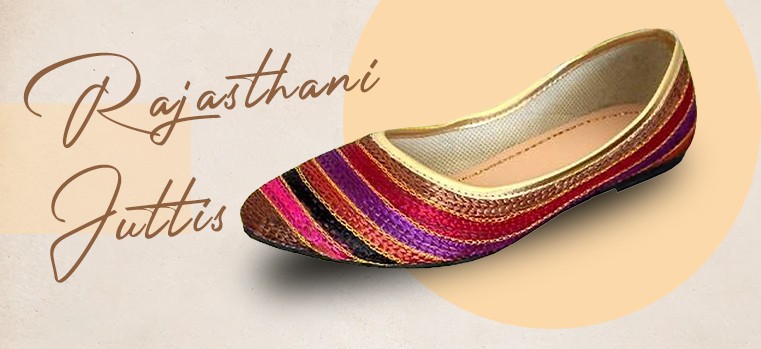
Nobody knows the exact period and date, although some claim it was more than three hundred years ago when unique footwear was made for Rajasthan's royal nobles and kingsmen, which they termed Nagra. These juttis were so well-known that their name and rich culture spread fast to neighbouring regions like Punjab.
Juttis of Punjab
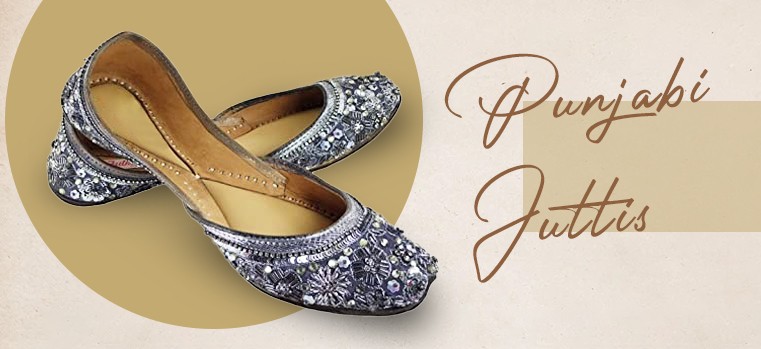
Because these two republics are so near together, this style was quickly adopted, and artisans gave this Nagra shoe a rich twist to its style and name, christening it Jutti. In Punjab, these were referred to as Punjabi juttis rather than Nagra footwear, with Mojaris and khussa being the most popular styles. These Punjabi juttis have been made by Raijer Mochis (cobblers) from Rajasthan's Sikal and Shikawat areas for three centuries.
How juttis are made?
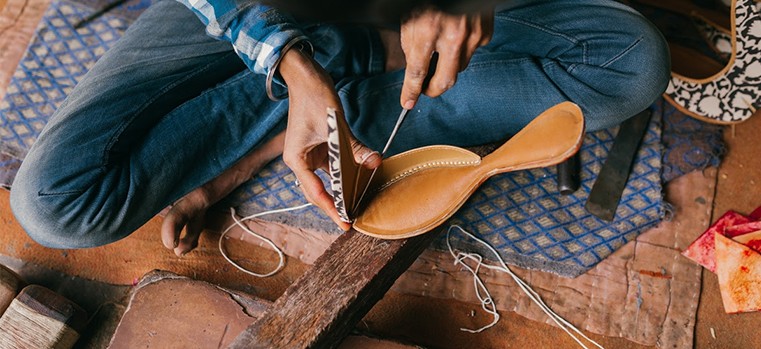
1. Rawhide is first processed using the vegetable tanning method. Tannin, which comes from the Kikkar tree, is utilised for this purpose.
2. The treated leather is then cut into numerous sections, which are later used as part of the footwear.
3. The shoe upper, which is stitched and adorned with brass nails, is either made of leather or cloth. Shells, mirrors, bells, and ceramic beads are among the other festoons.
4. The shoe is then put together, and the finishing is done by a craftsman. Patiala, a city in Punjab, is known for having India's largest jutti market. There's never a dull moment when it comes to variety.
The Chamar community was in charge of processing the rawhides, while the "Rangaar" group was in charge of drying and colouring the hides, and the women of the "Mochi" community were in charge of the delicate task of embroidery, adornment, and putting the pieces together.
Characteristic Features:
- Completely handcrafted and versatile.
- There is no left or right distinction
- With continual usage, these Juttis take shape of the foot.
- They usually have a flat sole and are similar in design for both women and men.
- Juttis do not weigh more than a beach flip-flop
Types of juttis
1. Salem Shahi Juttis-
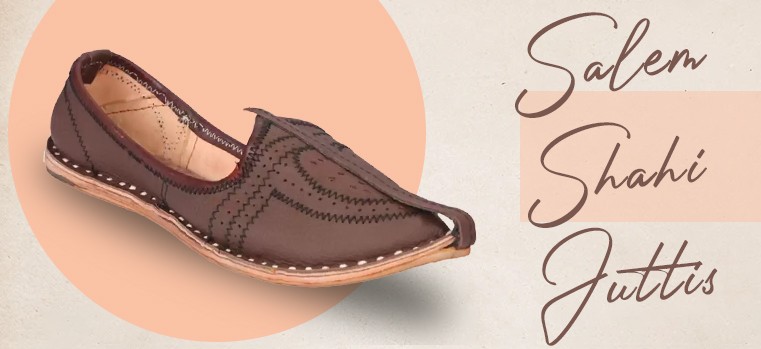
This style has a pointed or curled toe and a spade-shaped sole, and it's well-known among men because it's named after the legendary Mughal Prince Saleem.
2. Tilla juttis:
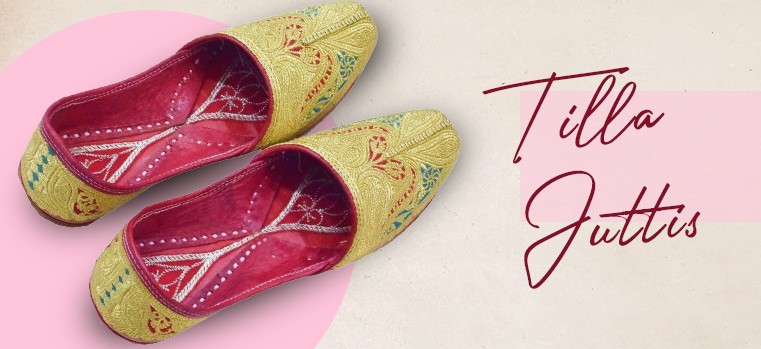
Juttis with gold thread or zari embroidery are known as tilla juttis. These can be further divided into three categories based on structural differences: Lakhi, Milan, and Khosa.
3. Khussa juttis:
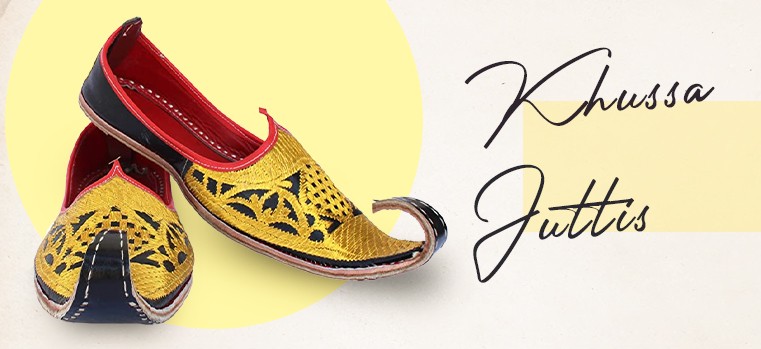
It's exclusive for guys, with the tip curled up like a moustache end, a unique badge of macho hood among Punjab men known as Thoondiya Muccha Gabru.
4. Lucky jutti:
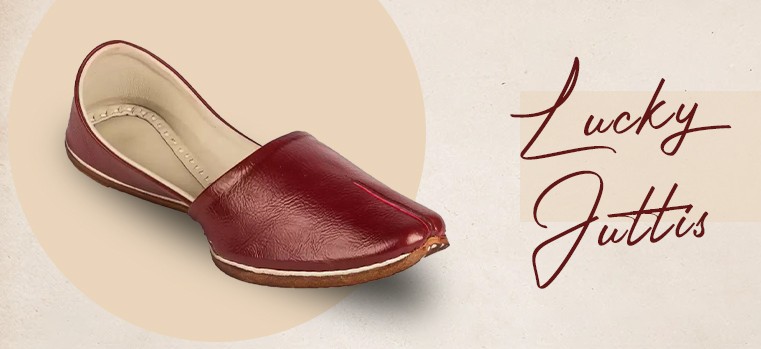
Lucky Jutti is named after the Punjabi term Luck, which meaning waist. It has a slender midsection that resembles a girl's waist.
5. Kasuri juttis:
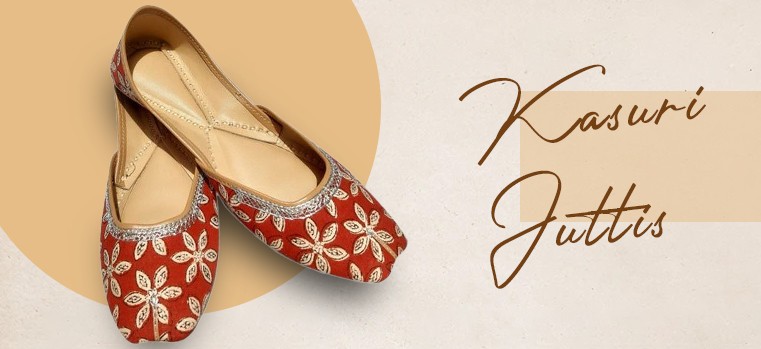
This is a Pakistani speciality that has a unique toe indent design.
6. Jalsa jutti:
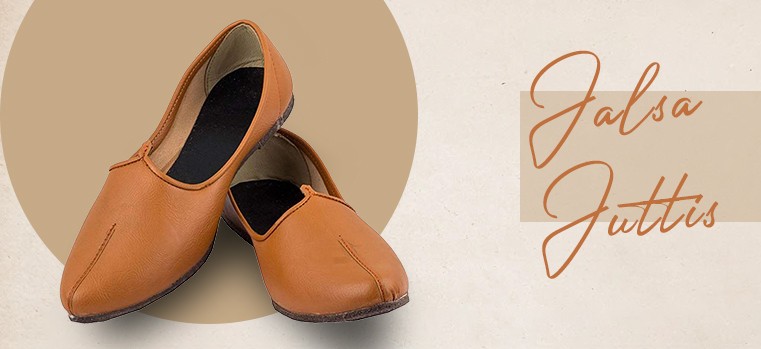
This is a one-of-a-kind form of footwear that can be worn for casual occasions, weddings, religious occasions, as well as celebrations and festivals.
How to look fabulous in traditional juttis?
1. Traditional Indian attire:
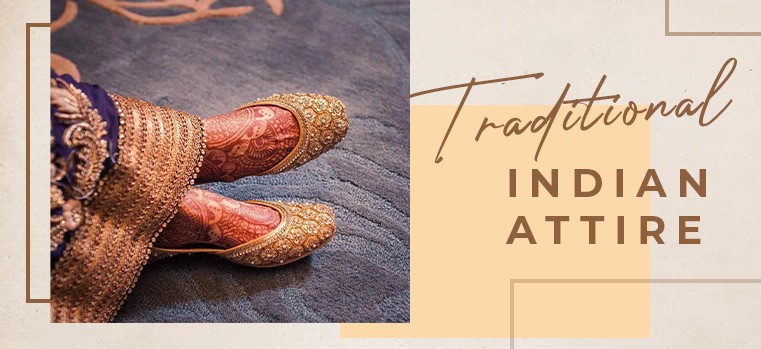
Juttis can be worn with any traditional clothing, whether it's a Sari, Suit, or Lehanga. Get rid of your unpleasant stilettos and wear this lightweight footwear to a wedding or any other festive occasion. Designers are also offering bespoke juttis that match the embroidery or colour of your garment to add more glitz to your look.
2. Western attire:
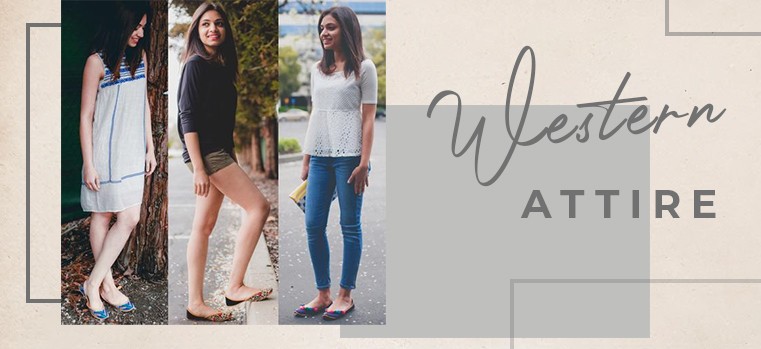
To give your western outfit a traditional spin, pair tan coloured jutti with any maxi dress or trousers and kurta.
Contemporary Style:
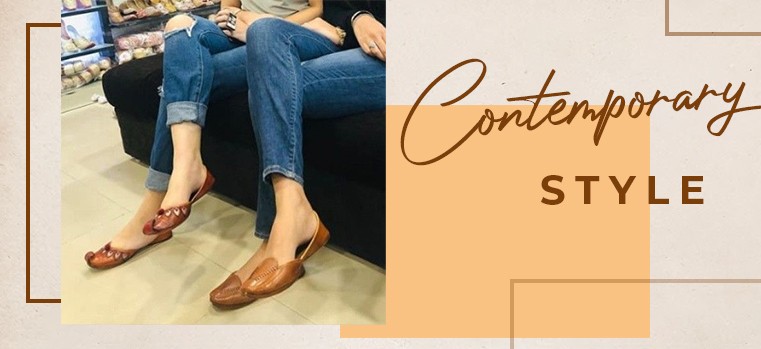
These days, the market is flooded with trendy, unique, and quirky printed Juttis, an ideal pick for your everyday casual outfits.
Global reach
Juttis are popular in several nations, including the United States, Canada, the United Kingdom, and Europe. In reality, numerous western manufacturers have created juttis as their own fashion footwear, captivated by the modus operandi and distinct genre. The unique way of producing jutti is enthralling and intriguing.
Juttis in rage
- Printed juttis:
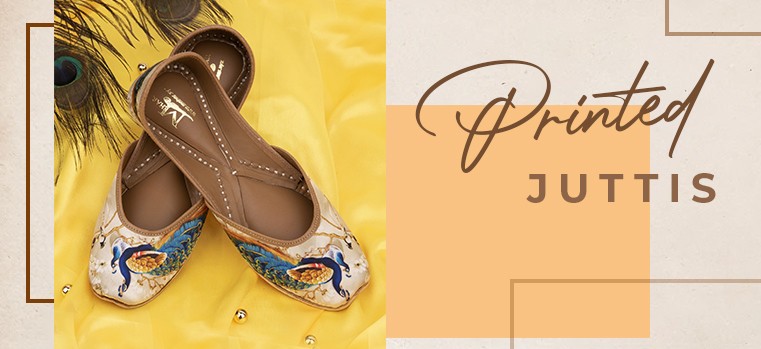
Printed juttis are the most basic and attractive juttis, and they look well with both denim and traditional clothing. Brides can choose from a range of prints, such as floral patterns, multicoloured print, Black and White Casual Printed Handmade Jutti, and so on, to complement their lehengas and salwar kameez.
2. Pompoms or tassels:
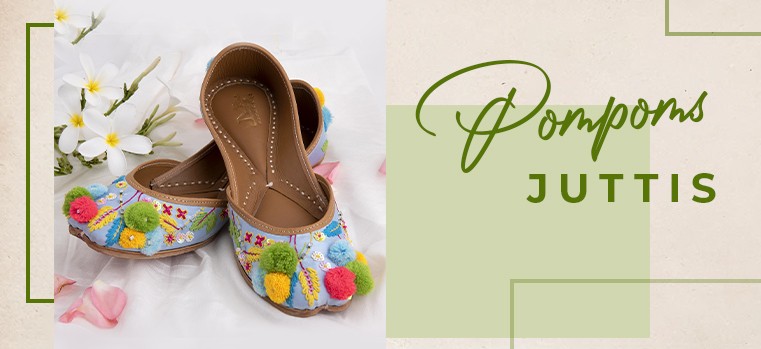
The rabari thread work and Pom Pom Braided Mojari Jaipuri Juttis are highly elegant and are worn on important occasions. Match the special pair of Jutti to flaunt with flair, whether you're in a joyful mood or a wedding is approaching.
3. Mirror styled juttis:
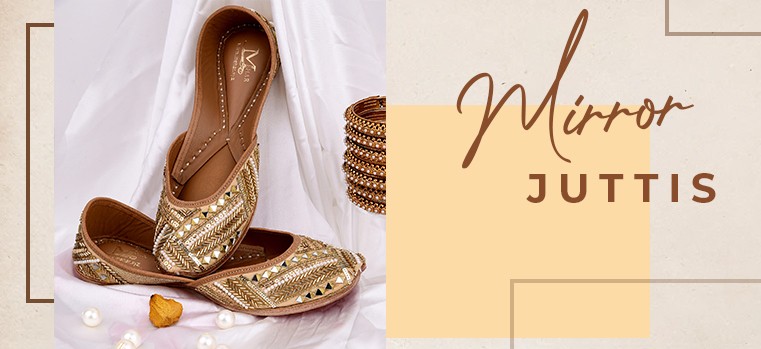
Mirrors, also known as shisha in Hindi, are glassworks that date back to the 17th century. This machine-cut glass shisha comes with a silvered backing and is available in hexagon, triangle, square, and circle shapes. The juttis are attractive and go well with any ethical clothing. Although the mirror work is silver, dabka work and colourful threads are used in the embroidery.
4. Ghungroo styled Jutti:
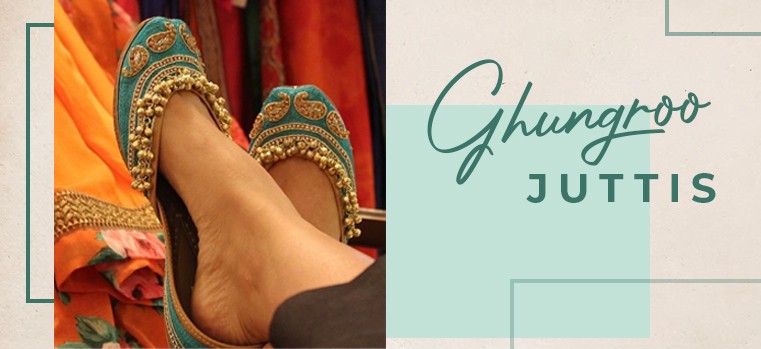
The little bells strung together at the jutti's edge are known as ghungroo. Ghungroo is a magical anklet placed above the ankle that makes a bell-like sound at the lower base. They serve to emphasise the dance's rhythmic elements while also allowing the audience to hear complicated footwork. The concept was to create footwear that might elicit a celebratory atmosphere and sound.
Final words
Gone are the days when women attended traditional festivities in juttis. Juttis are all the trend these days, and you'll see them on ladies of all ages, whether they're embellished, moderately ornamented, printed, or embroidered Punjabi Juttis to give a touch of legacy to your everyday wear. Try our e-stores for a complete authentic assortment of this regal footwear that lends a special aura to your personality with less effort.
Latest Posts
Categories
Tags


 +1-403-351-7777
+1-403-351-7777














